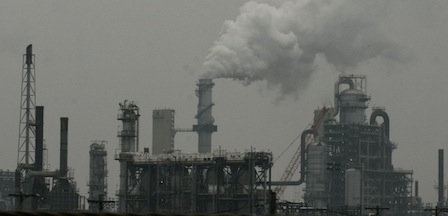
Last week, the Pembina Institute released a report on the climate impact of the proposed Energy East pipeline showing that this project would lead to a significant increase in Canada's greenhouse gas emissions.
According to the Pembina Institute, Energy East "could generate up to 32 million tonnes of additional greenhouse gas emissions each year – an even greater impact than the proposed Keystone XL pipeline."
The Pembina Institute also warns that "the crude production needed to fill the Energy East pipeline would generate an additional 30 to 32 million tonnes of carbon emissions each year – the equivalent of adding more than seven million cars to Canada's roads."
This pipeline would be the longest in North America, crossing six Canadian provinces and nine regions of Quebec. The tar sands are the most polluting industrial project in the world, and pipeline projects contribute to their expansion. Canada's greenhouse gas emissions are on the rise because of the tar sands, where "GHG emissions are projected to nearly triple between 2005 and 2020, an increase large enough to cancel out all emission reductions that other parts of Canada's economy are projected to make over the same period."
Read the report in full: Climate Implications of the Proposed Energy East Pipeline: A Preliminary Assessment




